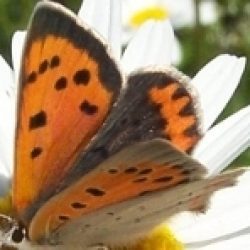A species complex is a group of closely related organisms that are so similar in appearance and other features that the boundaries between them are often unclear. The organisms in the complex may be able to hybridise readily with each other, further blurring any distinctions. The Swallowtail butterfly Papilio machaon in the Palaearctic (a biogeographic realm covering Europe, Asia north of the Himalayas, and North Africa) is a species complex. The differences observed in wing characters have led to many subspecies being described, but is there any genetic basis for these designations?
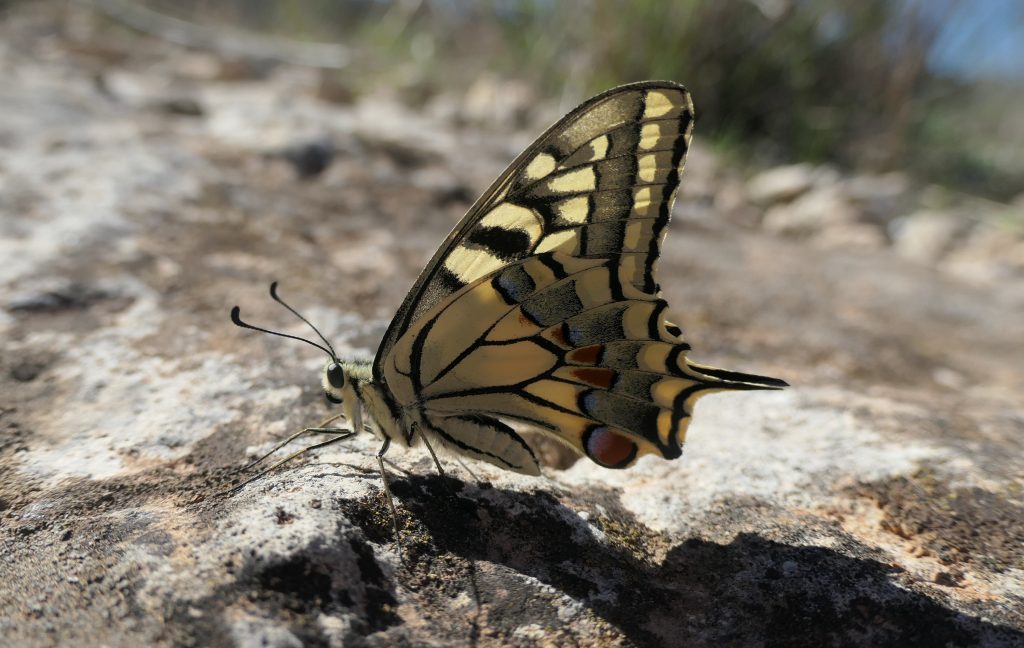
We can be confident that the Large White Pieris brassicae is distinct from the Small White Artogeia rapae, based on a range of taxonomic indicators. The appearance of the adults provides separation features: differences in size, markings, and colour are significant. Egg-laying behaviour differs: the Large White lays eggs in groups, the Small White lays singly. Larval behaviour differs: the Small White larva is solitary, the Large White larva is social, the Small White larva is usually concealed, while the aposematic (showing markings warning of danger or unpalatability ) Large White larvae feed in the open. The larval colour differences are also distinctive. Furthermore, the Small White larva is edible to birds, the Large White is distasteful, despite sharing the same larval food.
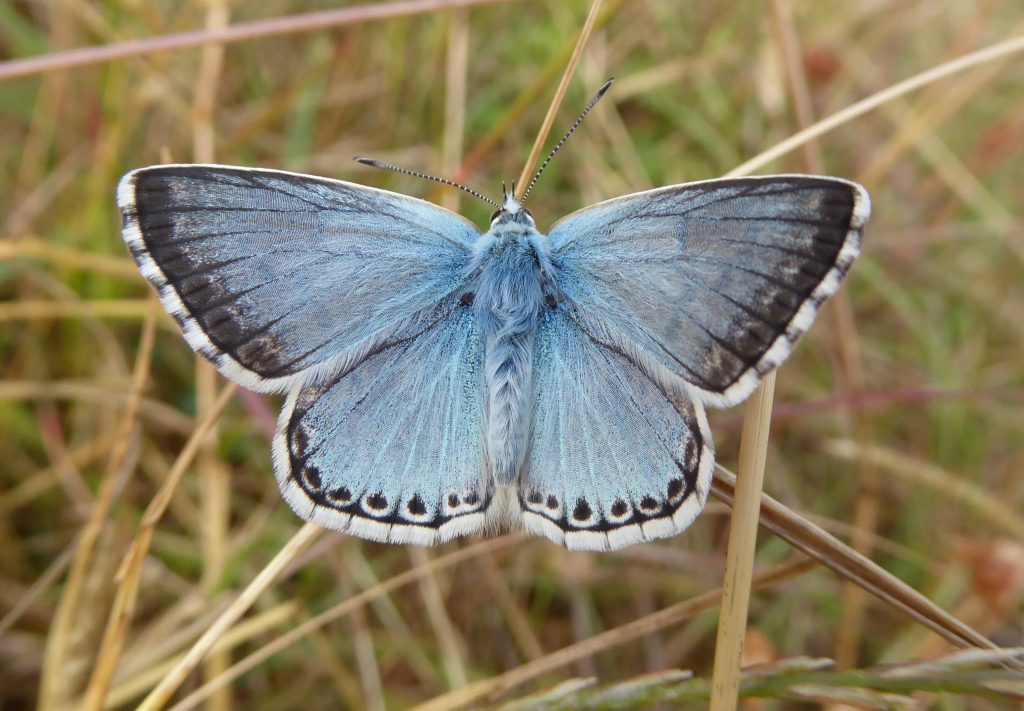
These differences are easily observed. However, in other species, such as the Chalkhill Blue, differences are far less obvious. However, genetic analysis is helping to separate species that look identical or nearly identical. The Chalkhill Blue Lysandra coridon contains 84-92 chromosomes. The Macedonian Chalkhill Blue Lysandra phillipi, which occurs only in northern Greece, on Mount Pangeon and Phalakron, has only 20-26 chromosomes. Differences in appearance are slight, and specimens are often indistinguishable.
Many species include several subspecies. Subspecies is a rank below species, and refers to a population occupying a distinct area, separate from others of the same species and having constant and clearly different characteristics. However, size differences (among other differences), despite appearing significant, are not always reliable in distinguishing one animal from another.
A recent study, which assessed 40 subspecies of Papilio machaon in the Palearctic, simplified these to 14 subspecies (Nazari et al., 2023). A more recent study (Cassar et al., 2025), aimed at testing the taxonomic boundaries and relationships in the Western Palaearctic (Europe, N. Africa, Middle East) using whole-genome data of taxa (taxa are any biological unit species, subspecies or form or group of units such as genus, family, etc) from the Mediterranean region, which include first draft genomes of the Corsican Swallowtail Papilio hospiton and Desert Swallowtail Papilio saharae. Louis Cassar and his colleagues refined the species boundary of P. machaon and confirmed that the Desert Swallowtail, which closely resembles P. machaon, is a separate species, P. saharae, not a subspecies of P. machaon.
The study assessed the subspecies limits of Mediterranean P. machaon and P. saharae through Bayesian multispecies coalescent inferences (a statistical method used to estimate species trees and other evolutionary parameters, such as population sizes and divergence times, by modelling gene trees within a species tree framework) and population genomic analyses, indicating that a taxonomic simplification is needed, with the exclusion of P. machaon from North Africa (P. saharae mauretanica Verity, comb. nov.) and the synonymy of subspecies (P. saharae neosaharae Tarrier, syn. nov.). Common Swallowtail, therefore, does not occur in North Africa .
(Note: comb. nov refers to the formal renaming of an organism’s scientific name when it is transferred to a different genus, reclassified within a different species, or its taxonomic rank is altered; syn. nov.” stands for “new synonym”, used when a newly described species or other taxon is found to be identical to a previously named, but different, taxon. The older name is then considered the valid one, and the newer name is placed into synonymy with it.)
The study revealed heterogeneous (diverse) levels of heterozygosity (which refers to the presence of different alleles (versions of a gene) at a particular locus (location on a chromosome) in an individual’s genome) between island and continental lineages that warrant further taxonomic actions. They also found evidence of low gene flow between the Common Swallowtail in Corsica P. machaon, and the Corsican Swallowtail P. hospiton, endemic to Corsica and Sardinia. They discussed how the speciation (evolutionary process by which populations evolve to become distinct species) and phylogeographic patterns are in line with past climatic and geological changes of the Mediterranean Basin.
Although P. machaon is now excluded from North Africa, P. saharae has not been excluded from Europe. Indeed, the swallowtail on Lampedusa Island (Italy) has been designated as a subspecies of the Saharan Swallowtail, P. saharae aferpilaggi. The habitats on Lampedusa are like those in Malta, Sicily, and southern Italy. It breeds on different members of the carrot family than those used by P. machaon, which mainly uses Fennel Foeniculum vulgare and Fringed Rue Ruta chalepensis in southern Europe and Milk Parsley Peucedanum palustre further north. P. saharae might be found in Sicily; this is not yet confirmed.
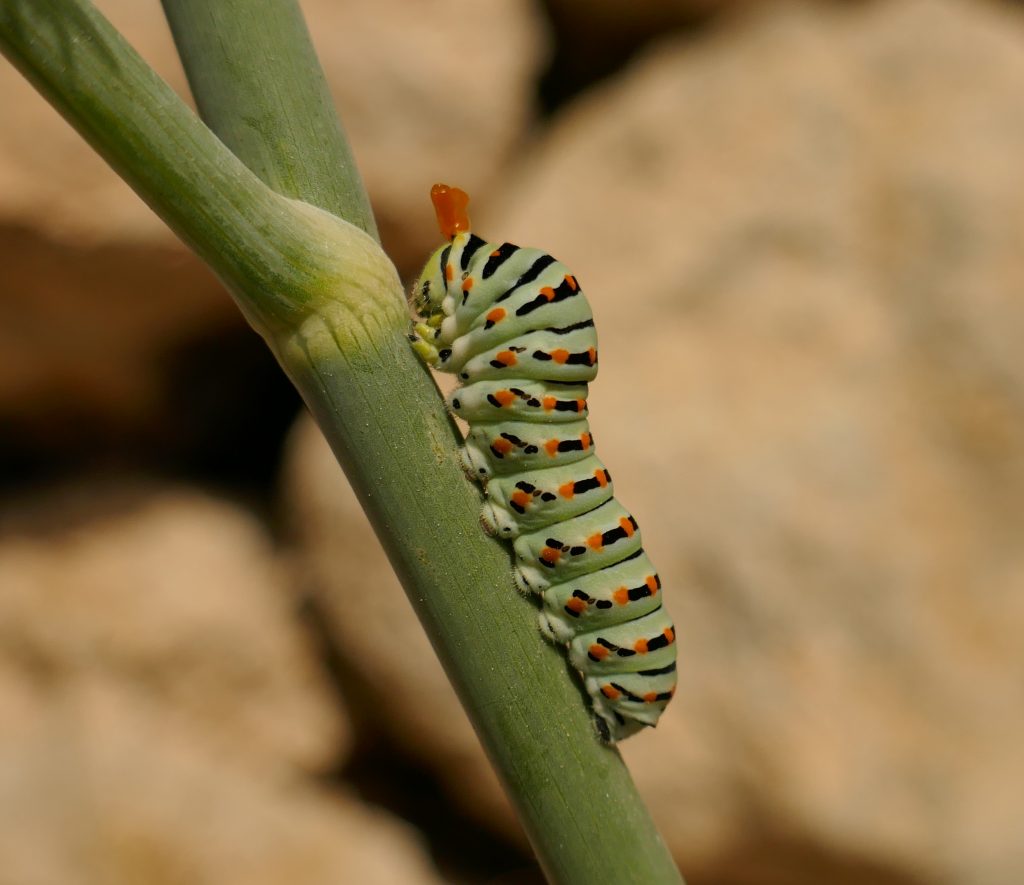
There are morphological differences that can help to distinguish P. machaon and P. saharae. The larvae of the Saharan Swallowtail and Common Swallowtail species complex show differences in appearance. Regarding adults, 30–31 antennae segments are found in P. saharae and 33–36 segments in P. machaon. Many specimens of P. s. aferpilaggi were found to have between 29 and 35 antennal segments, with most specimens toward the lower end of the range. The genetic analysis indicates that this taxon is distinct from P. machaon and other P. saharae subspecies, but also that it is a subspecies of P. saharae. The brood structure of P. machaon and P. saharae differs, but at least some differences might be governed by climate and weather.
Mainland P. machaon specimens from Spain, Southern France, Romania, Lebanon and Israel are genetically very uniform, which correlates with the hypothesis proposed by Nazari et al. (2023), placing all these populations in a single subspecies, P. machaon aestivus.
Specimens from Sicily and Malta are differentiated from P. m. aestivus confirming the validity of subspecies P. m. sphyrus. The samples from Sicily and Malta are slightly differentiated from each other, but there are no constant, definable morphological characters to separate these populations. The genomes of specimens from Corsica are genetically close to those of subspecies P. m. sphyrus rather than P. m. aestivus, which needs further investigation. Previously, Corsican machaon has been placed with P. m. emisphyrus Verity (type locality Florence), which is considered by Nazari et al. (2023) as a synonym (the same as) of P. m. aestivus. Cassar et al. (2025) state that additional samples from mainland Italy are needed to confirm whether the genome of P. m. emisphyrus corresponds with P. m. aestivus or is close to P. m. sphyrus, like the Corsican samples.
The specimens from Crete are supported as a distinct lineage by some analyses (e.g. BPP) and have the lowest genetic diversity leading to a high genetic differentiation compared to other P. m. aestivus populations, but again, further samples are needed to clarify the taxonomic status of Crete machaon. Seyer (1977: p. 105) described subspecies P. m. ruettimanni from ‘Kreta, Karpathos und Rhodos’ but designated the holotype from Rhodes (holotype is a single type specimen upon which the description and name of a new species is based). Additional samples from Rhodes, and preferably also other islands and Southwest Turkey, are needed before application of a name to the samples from Crete. Nazari et al. (2023) placed P. m. ruettimanni as a synonym of P. m. aestivus, but the results of the 2025 study suggest that at least the Crete population is significantly different.
Overall, the study simplified 14 Common Swallowtail subspecies in the Western Palaearctic, proposing the following subspecies.
Papilio machaon Linnaeus, 1758; Systema Naturae (Ed. 10), 1: 462; TL: Europæ [= Sweden].
ssp. gorganus Fruhstorfer, 1922; TL: Germania, Austria. Europ. centr.
ssp. aestivus Eimer & Fickert, 1895; TL: Beirut.
ssp. sphyrus Hübner, [1823]; TL: not stated [= Sicily].
ssp. melitensis Eller, 1936; TL: Malta.
Nine taxa that were formerly recognised as subspecies (such as ssp. hispanicus) are absorbed under ssp. aestivus.
Cassar et al. (2025) propose three subspecies of Papilio saharae in the Mediterranean region (saharae, mauretanica and aferpilaggi)
The study looked at phylogeographical factors. Phylogeography is the field of study that combines genetics and geography to understand how evolutionary processes have shaped the geographic distribution of lineages. It examines the genetic structure of populations in relation to their spatial distribution, helping to reconstruct the historical processes (such as sea level changes, climate change) that have led to the current patterns of biodiversity.
The study found that P. m. sphyrus (Southern Italy to Sicily) and P. m. melitensis (Malta) diverged between 3000 and 6500 years ago, which is after the last glacial maximum ended. The central Mediterranean area also experienced the influence and perturbations caused by marine regressions, isolation, and influx from continental landmasses. As a result, there are marked biogeographical affinities between Sicily, the Maltese Islands and continental Italy, given the physical connection that occurred between them at various times during the Pleistocene. The last physical connection between Sicily and Malta is known to have taken place during the last glacial maximum, approximately between 30,000 and 14,000 years ago, after which any form of physical connection vanished, thus leaving Malta isolated. Although P. machaon is reluctant to cross seaways (Grech et al., 2024), the study results suggest the colonisation of Malta could have occurred through overwater dispersal.
Intriguingly, the study indicates that differences in wing shape are not necessarily indicative of genetic differences. The taxon Papilio saharae neosaharae, distinguished by a narrower, elongate forewing compared to P. s. saharae, was found to be genetically indistinguishable from P. s. saharae and is treated as a synonym (syn.nov.) by Cassar et al. (2025). This difference in wing shape can be the result of adaptation to Rutaceae (citrus family) as larval foodplant in P. s. neosaharae rather than the use of Apiaceae (carrot family) by P. s. saharae, or the effect of local environmental conditions. Interestingly, specimens also feeding on Rutaceae from SW France, which seem similar to P. s. neosaharae, were genetically identical to local Apiaceae-feeding P. machaon, suggesting that the foodplant may affect phenotype (appearance) to a certain extent.
Finally, in a 2022 study (Damagala & Lis 2022), mitochondrial DNA (mtDNA), 16S rDNA and cytochrome b sequences were used to examine the correlation between the intraspecific classification (classification of individuals within a species, including categories like subspecies, varieties, or forms) and the genetic structure of P. machaon. Most researchers agreed that the population of the Old World swallowtail from the British Isles represents the endemic subspecies britannicus. The 2022 analysis did not show the distinctiveness of the British subspecies from the other European subspecies as proposed by many authors.
The haplotype analyses (haplotype is the set of genes at more than one locus which is inherited by an individual from one of its parents) and the location of European specimens on phylogenetic trees indicate that, despite the significant geographical distances between populations, there is the possibility of a flow of genetic information throughout Europe (including the British Isles). However, the second British specimen in the sample represented unique haplotypes. The study results suggest that the Old World swallowtail is an excellent flyer, and its individuals have no problem moving large distances, enabling the exchange of genes within one large genetic pool throughout Europe and Eurasia.
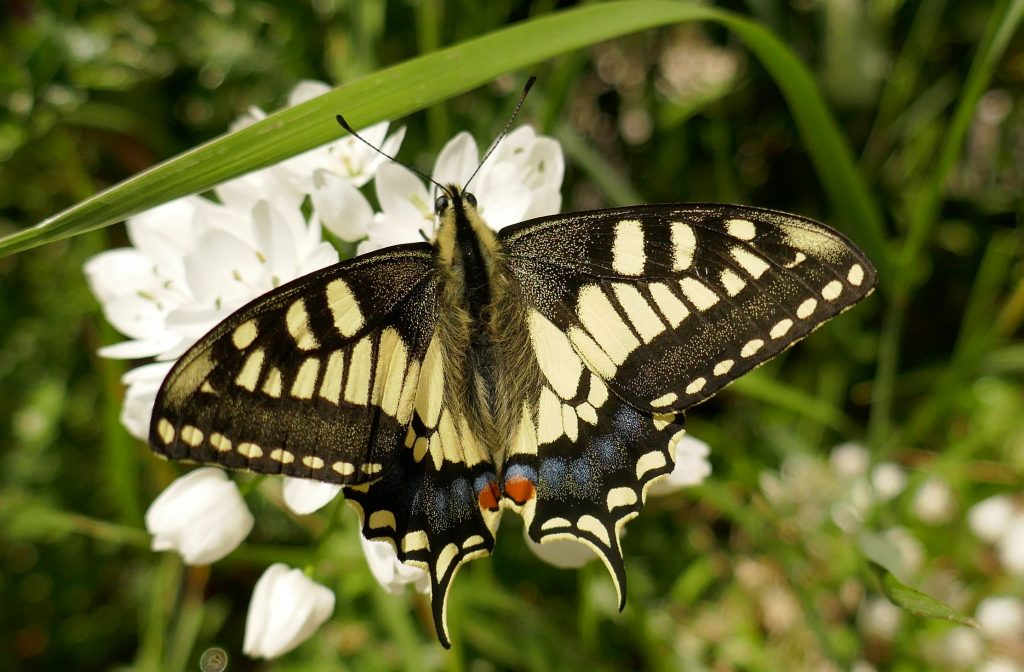
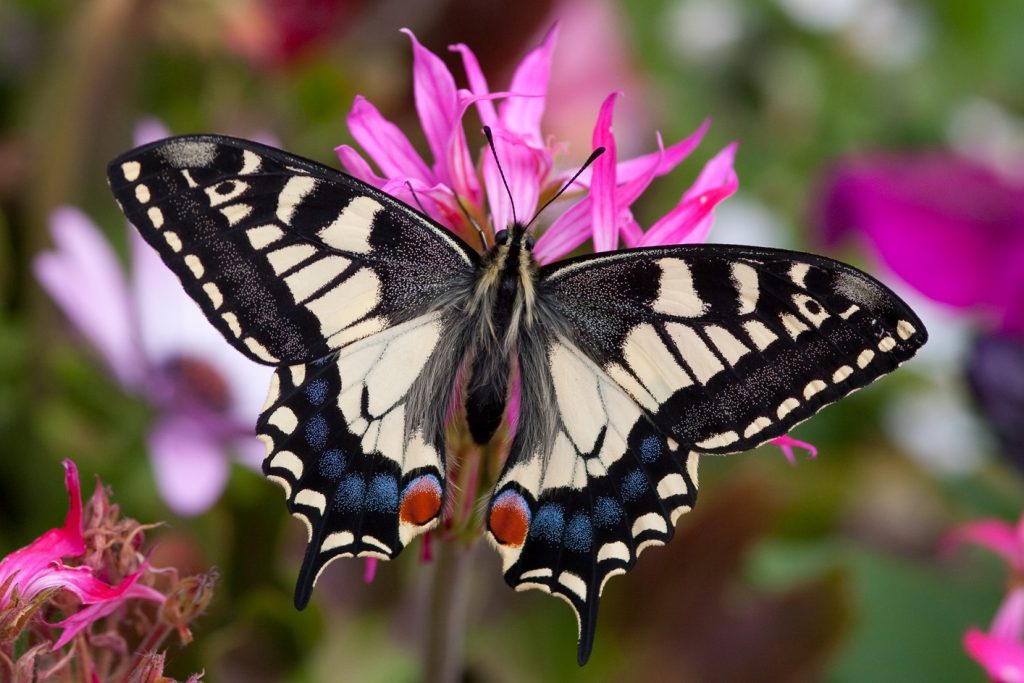
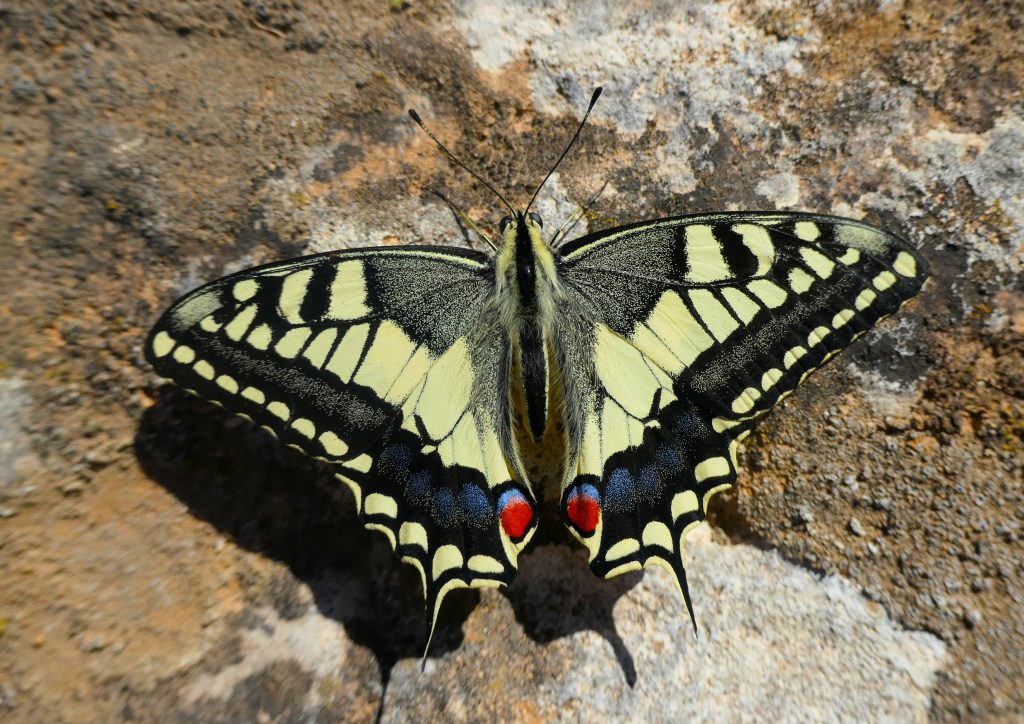
Certainly, from my observations, the adult is a formidable flyer, capable of sustained, powerful flight when it can cross several kilometres without stopping. It often appears in areas with few nectar or foodplant resources, indicating its strong dispersive and migratory tendency. Individuals who are dispersing fly with speed and are impossible to follow. Its beauty, highly variable appearance and charismatic behaviour have long charmed lepidopterists, including this one. Ireland is alone in Europe in lacking this butterfly. The warming climate might result in colonisation. I doubt that anyone will object.
Note: Responses awaited from the corresponding author of the study, ‘Whole-genome data shed light on speciation and within-species differentiation of the Papilio machaon complex around the Mediterranean Basin’, may result in amendments to this article.
References
Cassar, F., Nabholz, B., Reboud, E. L., Chevalier, E., Lafon, B. J., Cotton, A. M., & Condamine, F. L. (2025). Whole-genome data shed light on speciation and within-species differentiation of the Papilio machaon complex around the Mediterranean Basin. Systematic Entomology, 50(4), 692-712. https://doi.org/10.1111/syen.12675
Domagała, P.J.; Lis, J.A. One Species, Hundreds of Subspecies? New Insight into the Intraspecific Classification of the Old World Swallowtail (Papilio machaon Linnaeus, 1758) Based on Two Mitochondrial DNA Markers. Insects 2022, 13, 752. https://doi.org/ 10.3390/insects13080752
Grech, N., Cassar, L.-F. & Gauci, A. (2024) Use of telemetry to monitor the movements of Papilio machaon (Lepidoptera Papilionidae) and Chamaeleo chamaeleon (Squamata Chamaeleonidae). Naturalista Siculo, 48, 61–70.
Nazari, V., Cotton, A.M., Coutsis, J.G., Shapoval, N., Todisco, V. & Bozano, G.C. (2023) Guide to the butterflies of the Palearctic region. Papilionidae part IV, subfamily Papilioninae, tribe Papilionini, genus Papilio (Partim). Milan: Omnes Artes s.a.s, p. 91.
Seyer, H. Entomologische Notizen. Mitt. Entomol. Ges. Basel 1977, 27, 28.

